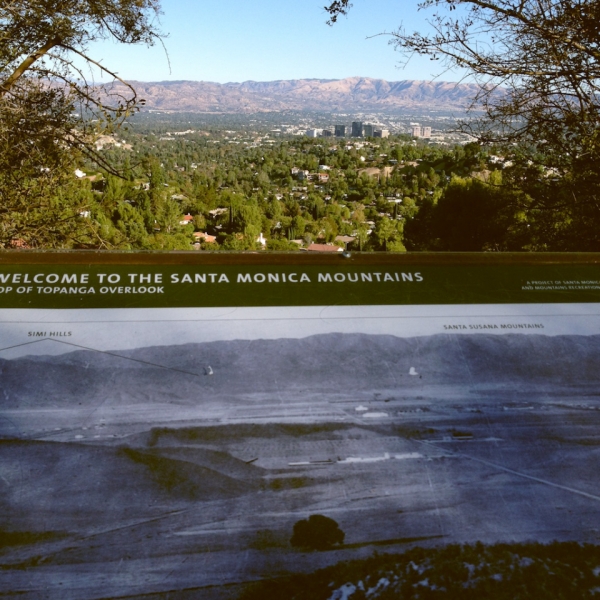The Roots of Sprawl in the Valley
Ruskin Hartley, Heal the Bay’s CEO, says trees in the Valley hold some valuable clues.
I’m slowly exploring more of the greater Los Angeles area. Recently I drove over the mountain in Topanga to the San Fernando Valley. Before the switchbacks, a sign and pull-out pointed me toward the Topanga Overlook. Turns out people have been stopping here for as long as cars have been on the road. Early in the morning, the air was still clear. The overwhelming impression looking north was of a green valley punctuated with grey tower blocks, with desiccated hills beyond.
But it hasn’t always been this way. There’s a great interpretive sign at the Overlook that shows what you would have seen about 70 years ago. As I expected, the space looked more open. Back then farms and rangeland filled the Valley. But what really struck me were the trees. I expected to see the change in the built environment. But not the trees. (It’s telling that Encino, one of the Valley’s more notable communities, is named for the Spanish word for oak.)
As people moved to the Valley they brought the trappings of modern suburbia with them. Freeways. Strip malls. Tract homes. And trees.
Trees are great. Don’t get me wrong, I spent the better part of the last 15 years protecting them. But trees don’t thrive in arid environments. I have no idea what the proliferation of trees has done to the water budget for the Valley. But I do know that the vast majority of the water used to sustain them is imported from far away. Both the suburban sprawl and the trees are testament to that. Obviously, trees in the Valley aren’t the root of our water issues in L.A., but they do symbolize our complicated relationship to our surroundings.
Over the recent decades, Angelenos have embraced water conservation, reducing consumption while our population continued to grow. However, we’ll need to do more if Los Angeles is to secure a reliable water future. We’ll have to get smarter at retaining, recycling and re-using local water. That way we can retain our trees and ensure the future of our cities.
Heal the Bay is working with local communities in South Los Angeles to build urban pocket parks that both clean up stormwater and put it to beneficial uses to irrigate parks that people can enjoy. You can learn more about our Healthy Neighborhoods initiative here.
 Signage at the Topanga Overlook.
Signage at the Topanga Overlook.
(Historic oak image courtesy of CC Pierce Photography Collection, USC Libraries)


